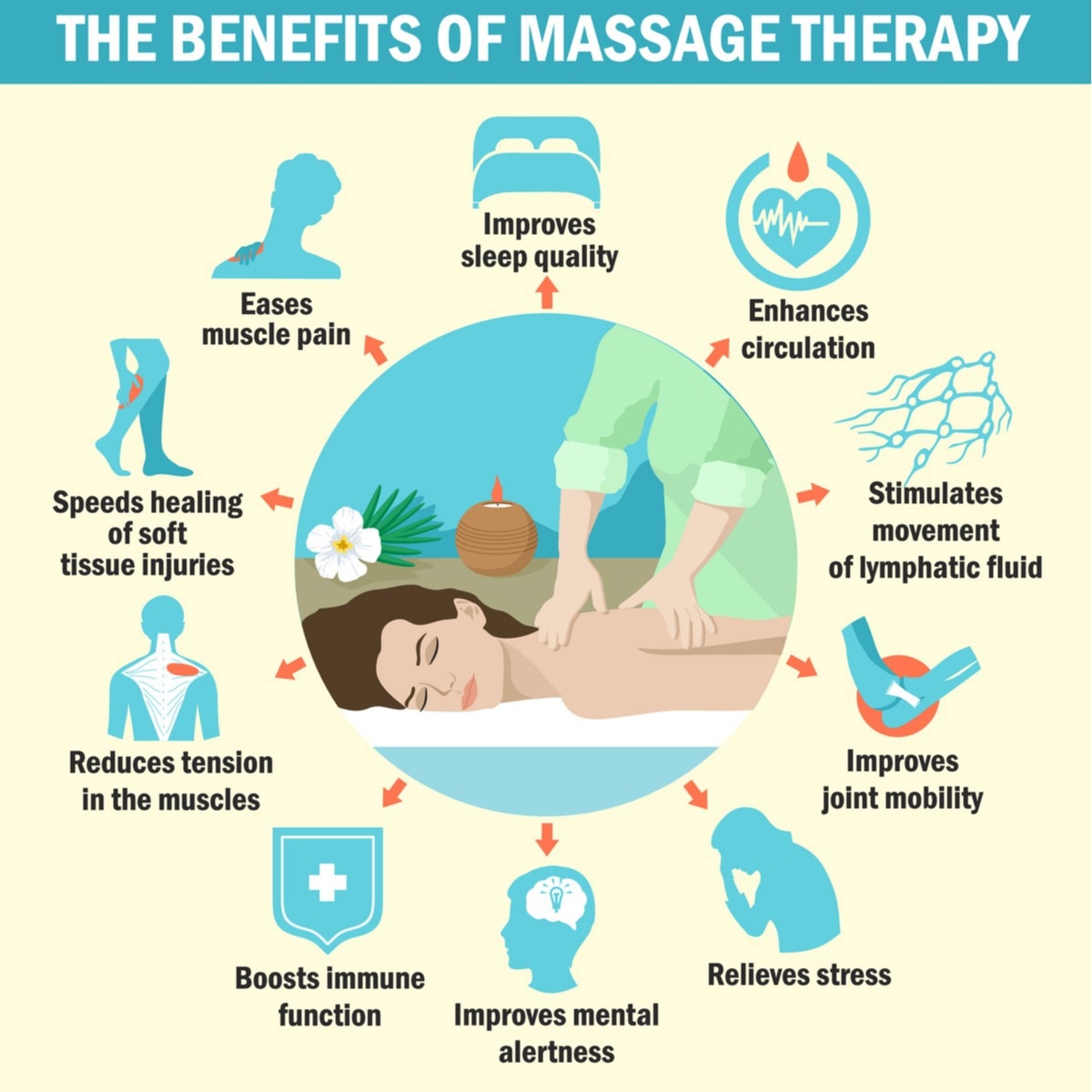Health benefits of massage therapy: One of the earliest known therapeutic practices is massage. Numerous ancient cultures, including the Greeks, Egyptians, Chinese, and Indians, believed that massage therapy possessed curative properties and used it as a treatment for a variety of maladies.
It is the practice of manipulating or kneading a person’s muscles and other soft tissues to improve their health and well-being. The muscles, tendons, ligaments and tendons, and fascia are all grasped, manipulated, and compressed as part of this manual therapy.
A growing number of medical conditions and maladies benefit from massage therapy in addition to standard treatment. The health benefits of massage therapy will be discussed in this article.
Types of massage
Massage therapy offers a variety of contact, pressure, and intensity delivery methods. Swedish massage is a delicate technique involving long strokes, kneading, deep circular motions, pressing, and vibration. The effect is both tranquil and energizing.
Deep massage refers to massage techniques that focus on the deepest levels of muscle and connective tissue. It is commonly used to treat muscle damage after an injury.
In contrast to conventional Swedish massage, which treats everyone, sports massage is tailored to the specific requirements of athletes. Trigger point massage loosens muscle fibers that have become contracted as a result of an injury or overuse.
Lymphatic fluid keeps physiological fluids balanced and eliminates detritus. Lymphatic massage employs light pressure to enhance lymphatic circulation. Massage of the lymphatic system is beneficial for those with inflammation, particularly those with arthritis and mastectomies.
Health benefits of massage therapy
Massage is frequently considered a component of integrative medicine. For many medical conditions and ailments, it is administered alongside conventional treatment.
Therapeutic massage increases muscle blood flow and temperature, enhances performance, decreases cell adhesion, increases muscular flexibility, and decreases injury risk.
Therapeutic massage has been practiced all over the world for thousands of years. A study published in the British Journal of Sports Medicine by British researchers indicates that therapeutic massage accounts for approximately 45 percent of physiotherapy treatment time. There are numerous applications for therapeutic massage, including competition preparation, during competitions, and post-competition recuperation.
Therapeutic massage reduces tissue adhesion through the application of mechanical pressure. Muscle-tendon compliance may be enhanced by mobilizing and elongating depleted or adhered connective cells.
Biomechanically, muscle-tendon unit conformity is determined by dynamic passive rigidity, robust active stiffness, and stationary joint end range of motion.
Massage can reduce stress, promote relaxation, alleviate pain and muscular soreness and tension, enhance circulation, energy, and alertness, lower blood pressure and pulse rate, and boost immune function.
How is massage beneficial to the body?
Massage utilizes a variety of physiological mechanisms to provide the body with benefits.
By increasing regional heat, shallow skin friction induces hyperemia. Local heating increases blood circulation. Massage increases epidermis and intramuscular temperature, but this may not alter muscle blood flow.
The relaxation that results from receiving a massage can alleviate stress and anxiety. One is the sympathetic nervous system, which is responsible for the “fight-or-flight” response during stressful situations, and the other is the parasympathetic nervous system, which is responsible for the regular and daily activities that lead to relaxation and rest.
A study published in The Journal of Clinical Psychiatry suggests that a massage can alleviate anxiety by enhancing parasympathetic response.
By receiving a massage, the stress hormone cortisol may be reduced, and the neurotransmitters serotonin and dopamine, known to regulate mood, may be increased. Massage therapy can assist those whose inability to sleep is caused by menopause or congestive heart failure.

Numerous researchers have examined the possibility that massage can alleviate acute back, neck, head, and knee discomfort.
A 60-minute massage administered multiple times per week is more effective at providing relief than fewer or shorter massages. The researchers caution, however, that this benefit may be transient rather than permanent.
Also read: 10 Healthy Ways to Use a Vitamix




